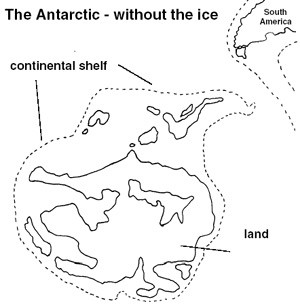
| Glasgow Digital Library | Voyage of the Scotia | BRUCE | PEOPLE | SHIP | ANTARCTIC | INDEX |
|---|
'One of the triumphs of the Scottish Expedition was the meteorological work.'
William Speirs Bruce
Bruce had made meteorological observations when on the Balaena whaling expedition in 1892. He was determined to carry on with this work and spent a year at the observatory on top of Ben Nevis.
The weather station set up at Scotia Bay in the South Orkney Islands was taken over by the Argentinian authorities. It is now the longest continually operating station in Antarctica.
Most of the scientific stations in the Antarctic today keep weather records. Although most stations have Stevenson screens and the thermometers associated with weather stations throughout Britain, the more sophisticated recording instruments use state-of-the-art electronics. Instruments can be read without going out into the awful conditions which can exist in the Antarctic. Automatic recording stations are used in the south - some of these continuously transmit recordings to satellites.
The weather systems of the Antarctic continent are continually mapped with synoptic charts as good as most parts of the world. Satellite surveillance now plays a very important part in weather forecasting.

Although weather records have only been kept in Antarctica for 100 years, it is possible to find out about past climates and past temperatures by studying ice cores. Over the past 100 years the climate of the Antarctic has warmed, along with global warming of the planet.
The major effect of this warming in Antarctica could be the melting of the ice cap. This may be a long-term process - especially of the East Antarctic ice cap - but a significant rise in sea level may occur in the foreseeable future. A world rise in sea level of only five metres would result in disastrous flooding in parts of the world. Some Pacific islands are less than five metres above sea level.
The sketch shows the Antarctic continent without the ice. The Antarctic peninsula is shown as an island. Unless there is some cataclysmic cosmic event it is unlikely that we will ever see the Antarctic in this form. If in thousands of years all the ice did melt, the continent would rise very slowly - by between 500 and 800 metres - as the huge weight of ice was removed.
In 2002 the first Antarctic meteorological station had been keeping recordings for 100 years, having been set up by the Scottish National Antarctic Expedition in 1902 and maintained by the Argentinian government since 1904. The base on Scotia Bay is now called Orcadas.
The world's atmosphere is gradually heating up. There are a number of reasons for this, but the most worrying one is people. We have been burning fossil fuels (oil, coal, gas) on a huge scale for almost 200 years. This has resulted in an increase in carbon dioxide in the atmosphere, one of the main greenhouse gases.
The main source of heat in the atmosphere occurs when the sun strikes the surface of the earth. The atmosphere is only slightly heated by the sun's rays passing through it. Greenhouse gases tend to act like the glass of a greenhouse - the sun's rays pass through the atmosphere, strike the surface of the earth and instead of passing back out into space are trapped by the greenhouse gases. One often forgotten greenhouse gas is water vapour, which increases as the planet heats up. More water vapour means more clouds means less loss of heat out into space means a warmer planet.
Research into global warming is concentrating on:
| Glasgow Digital Library | Voyage of the Scotia | BRUCE | PEOPLE | SHIP | ANTARCTIC | INDEX |
|---|